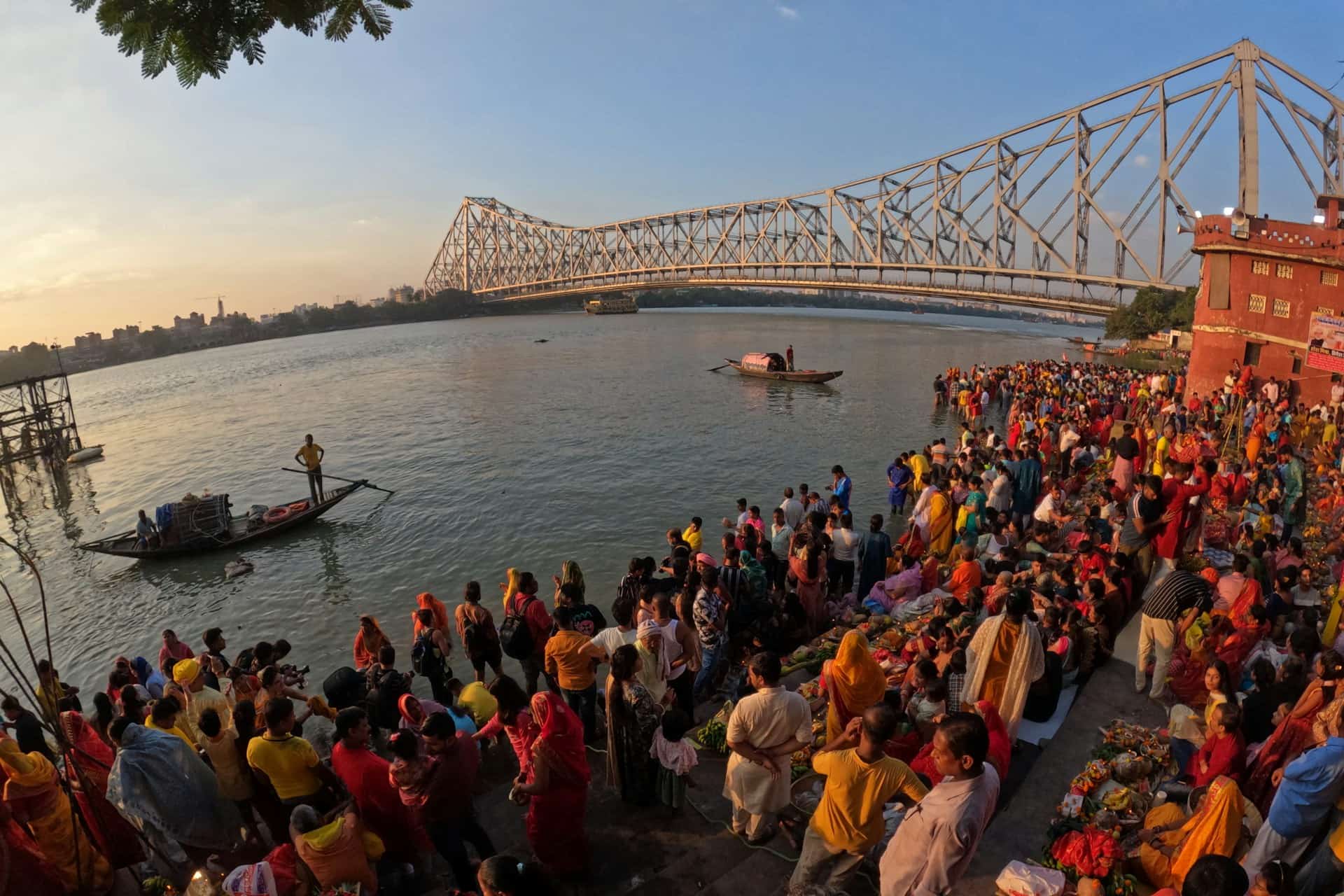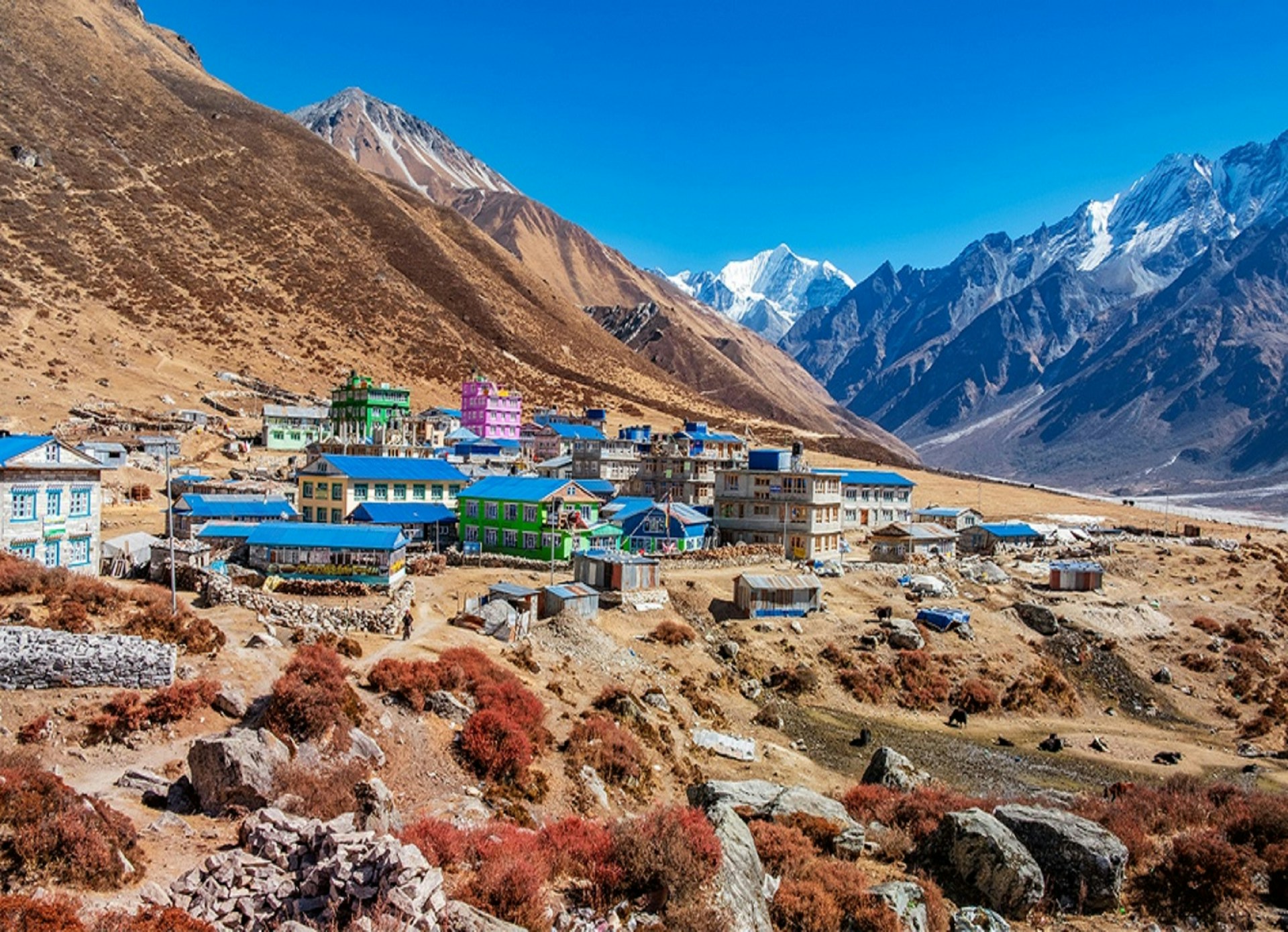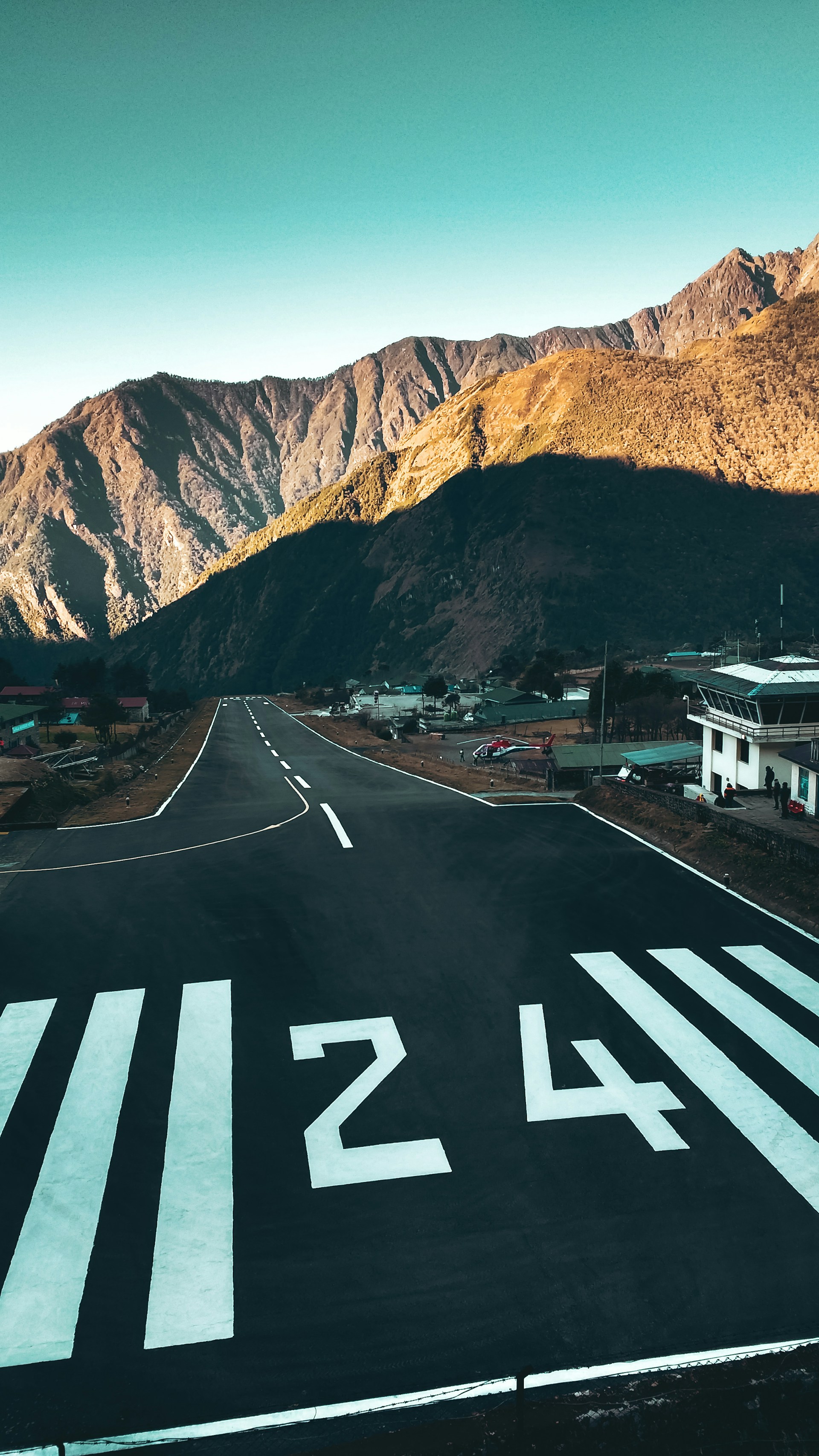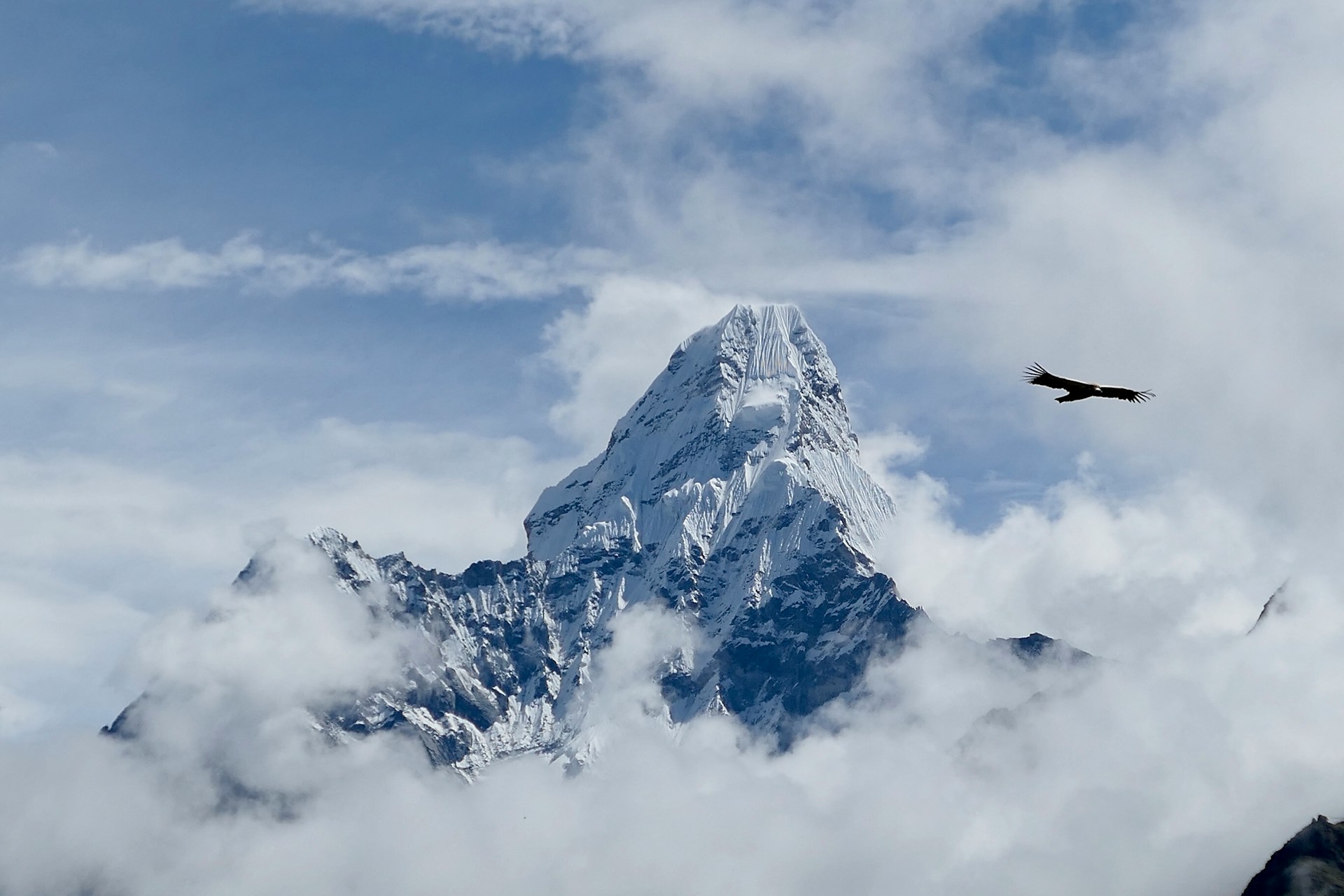Chhath is a revered Hindu festival of Nepal primarily celebrated in the Indian subcontinent, especially in the states of Bihar, Uttar Pradesh, and Jharkhand, and the Terai region of Nepal. This vibrant festival is dedicated to worshiping the Sun God, Surya, and his consort, Usha, the Goddess of Dawn. As part of this cultural experience in Nepal, devotees observe a unique ritual of offering prayers to both the setting and rising Sun. It is an ancient and elaborate celebration that spans four days and involves fasting, prayers, and offerings to the Sun to express gratitude for the life-giving energy the Sun provides.
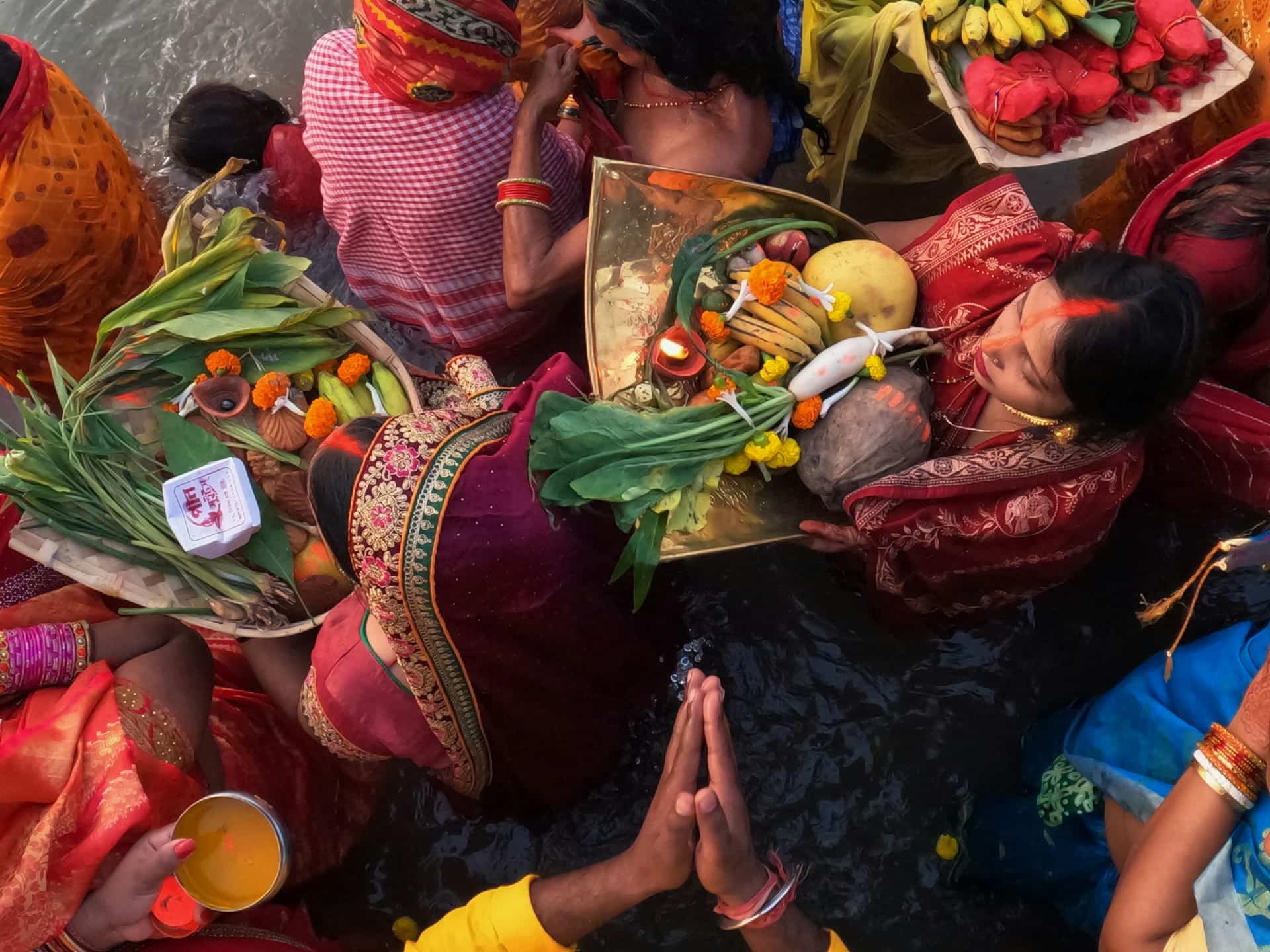
Discover the beauty of Chhath festival as women celebrate with trays full of fruits, symbolizing devotion and gratitude in this vibrant and meaningful tradition.
Historical and Mythological Significance of Chhath Festival
Chhath is one of the few Hindu festivals of Nepal that brings both rural and urban populations together through public community prayers and rituals. With ancient roots deeply connected with Hindu mythology, Chhath holds a special place in religious and cultural traditions. Various mythological stories are associated with the origin of the festival.
One of the most well-known stories involves Draupadi, the wife of the Pandavas from the epic Mahabharata. After the Pandavas lost everything in a game of dice and were sent into exile, Draupadi performed the Chhath rituals to seek blessings from the Sun God for her husband’s well-being and victory. Her prayers were answered, and the Pandavas regained their kingdom, which is believed to be one of the reasons why Chhath is celebrated as a festival of devotion and gratitude.
Another important mythological connection is with Lord Rama. It is believed that when Lord Rama returned to Ayodhya after defeating Ravana, he celebrated the festival of Chhath by offering prayers to the Sun God as a mark of thanksgiving for the blessings and protection received.
Historically, Chhath was celebrated by royalty, and the rituals were performed by the kings and queens of the region. Over time, the festival became more widely recognized and was adopted by common people as an important occasion to connect with the divine.
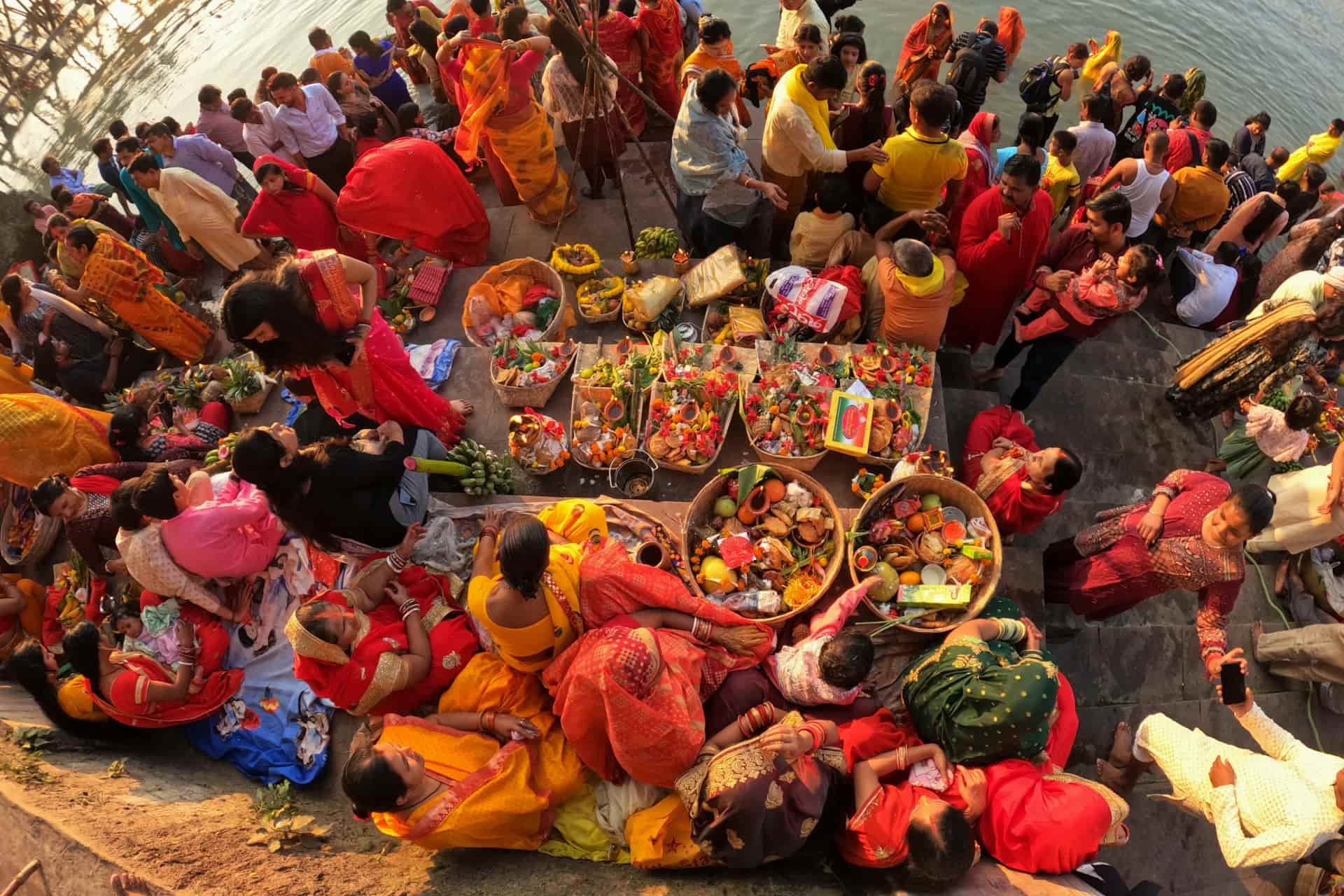
Witness the powerful scene of devotees gathered together during Chhath Festival, holding trays filled with offerings as they engage in prayer and worship, celebrating this sacred tradition.
Geographical and Cultural Spread of Chhath Festival
Chhath is widely celebrated in Bihar, Jharkhand, Uttar Pradesh, and Nepal. While these regions are the heart of the festival, it has spread to many parts of India and the world, particularly in places with significant Indian diaspora communities. In the United States, Canada, and the United Kingdom, Chhath is celebrated by people who have migrated from India and Nepal. Cities like New York, Chicago, and London see large gatherings of devotees who set up makeshift ponds and participate in the rituals, even though they are far from their homeland.
In Nepal, the Terai region, where people of Maithili and Bhojpuri origin reside, sees a strong tradition of Chhath celebrations. The festival has taken root in the modern cities as well, where people perform the rituals near rivers, lakes, or other bodies of water.
Chhath transcends cultural and geographical boundaries, as the core values of devotion, gratitude, and community spirit are universal. The festival’s celebratory atmosphere and its emphasis on family bonding have made it an event enjoyed by people across different cultures and regions.
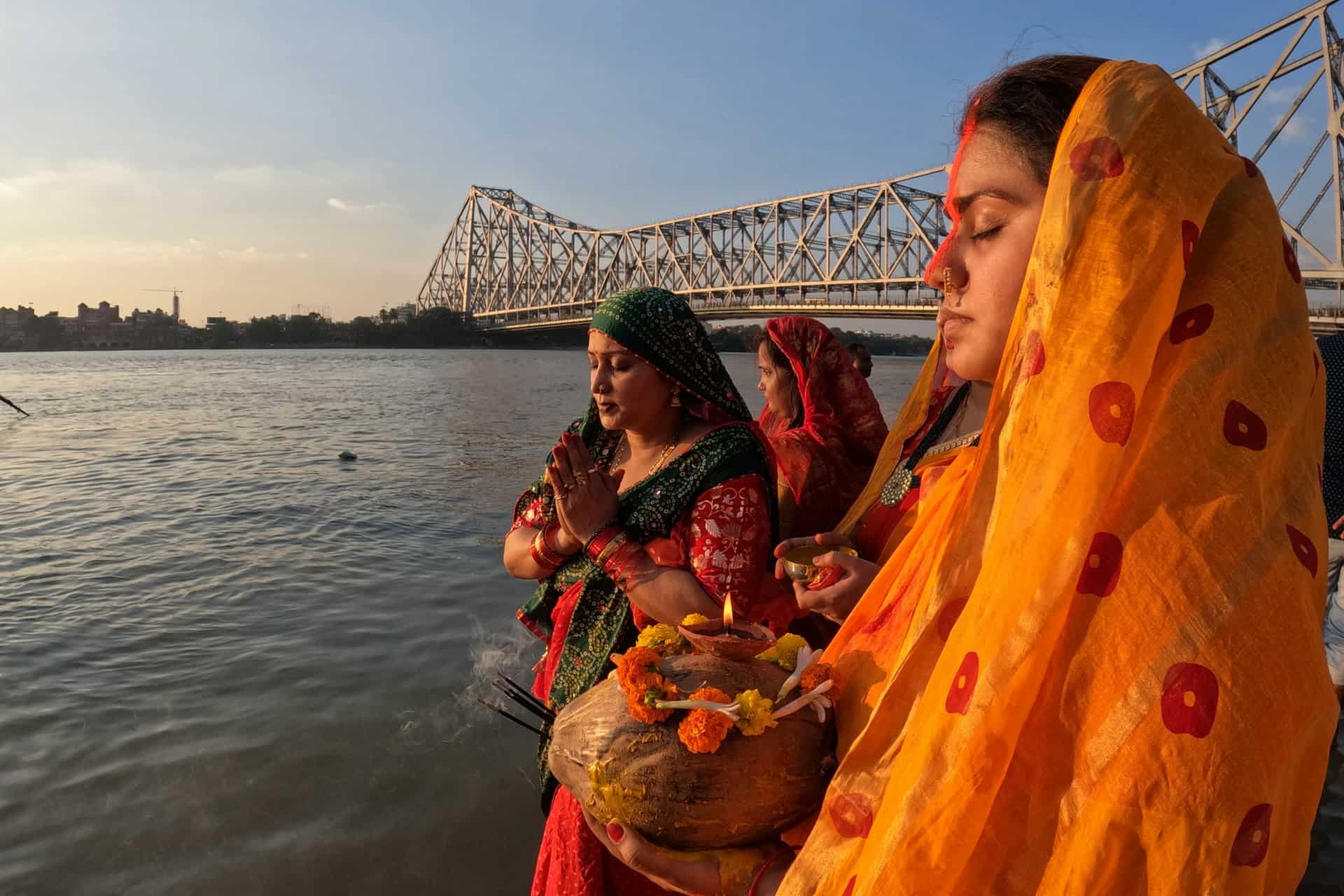
Experience the spiritual beauty of women praying by the river with diyos (lights) during Chhath Festival, a sacred moment of devotion and gratitude to the Sun God.
Religious Significance and Spiritual Beliefs of Chhath
The religious significance of Chhath lies in its worship of the Sun God, Surya, who is considered a symbol of life, health, and prosperity. The Sun is worshiped as a deity capable of purifying individuals and bringing spiritual healing. In Hinduism, the Sun is not only seen as a celestial body but as a living god who holds power over all life forms on Earth.
During Chhath, devotees offer prayers to Surya with the belief that doing so will ensure good health, prosperity, and well-being for themselves and their families. The festival is also an occasion to cleanse the soul, as participants believe that the rituals will purify their bodies and minds, leading to spiritual growth. The act of fasting, standing in water, and performing the rituals with devotion is said to invoke divine blessings.
In addition to worshiping the Sun God, Chhath is also an opportunity to honor Usha, the Goddess of Dawn, symbolizing hope, renewal, and the promise of a new day. The belief in the transformative power of the Sun and the Dawn highlights the importance of nature in the spiritual life of devotees.

Capture the devotion of a man standing in water, offering prayers to the Sun God with a coconut during the Chhath Festival, a sacred ritual of gratitude and worship.
Preparations and Observances for Chhath Festival
The preparation for Chhath begins days before the actual rituals. The devotees clean their homes thoroughly, as cleanliness is considered a vital aspect of the festival. The environment should be pure and conducive to performing sacred rituals. On the day before the festival, people gather ingredients for the special offerings that will be made to the Sun. Some of the key items include wheat flour, jaggery, rice, bananas, and sugarcane. Special items like bamboo baskets are also collected to hold the offerings.
The rituals during Chhath are not only religious but also community-driven. Devotees come together with their families to prepare the food offerings, sing devotional songs, and exchange blessings. They also create a festive environment by decorating their homes and public spaces with lights and flowers.
Day 1: Nahay Khay
The first day of Chhath is called Nahay Khay (Bath and Meal). On this day, the devotees bathe in a river or lake as a symbol of purification. It is a day of physical and spiritual cleansing, where all the negativity is washed away. The bath is followed by a simple meal, traditionally made of rice, lentils, and vegetables, all cooked without salt to maintain purity.
The meal is prepared by the women of the household, who follow strict guidelines while cooking. The food is then consumed by the family members as a sign of readiness to proceed to the more intense fasting on the following days. The main objective of this day is to cleanse the body and mind for the rituals ahead.
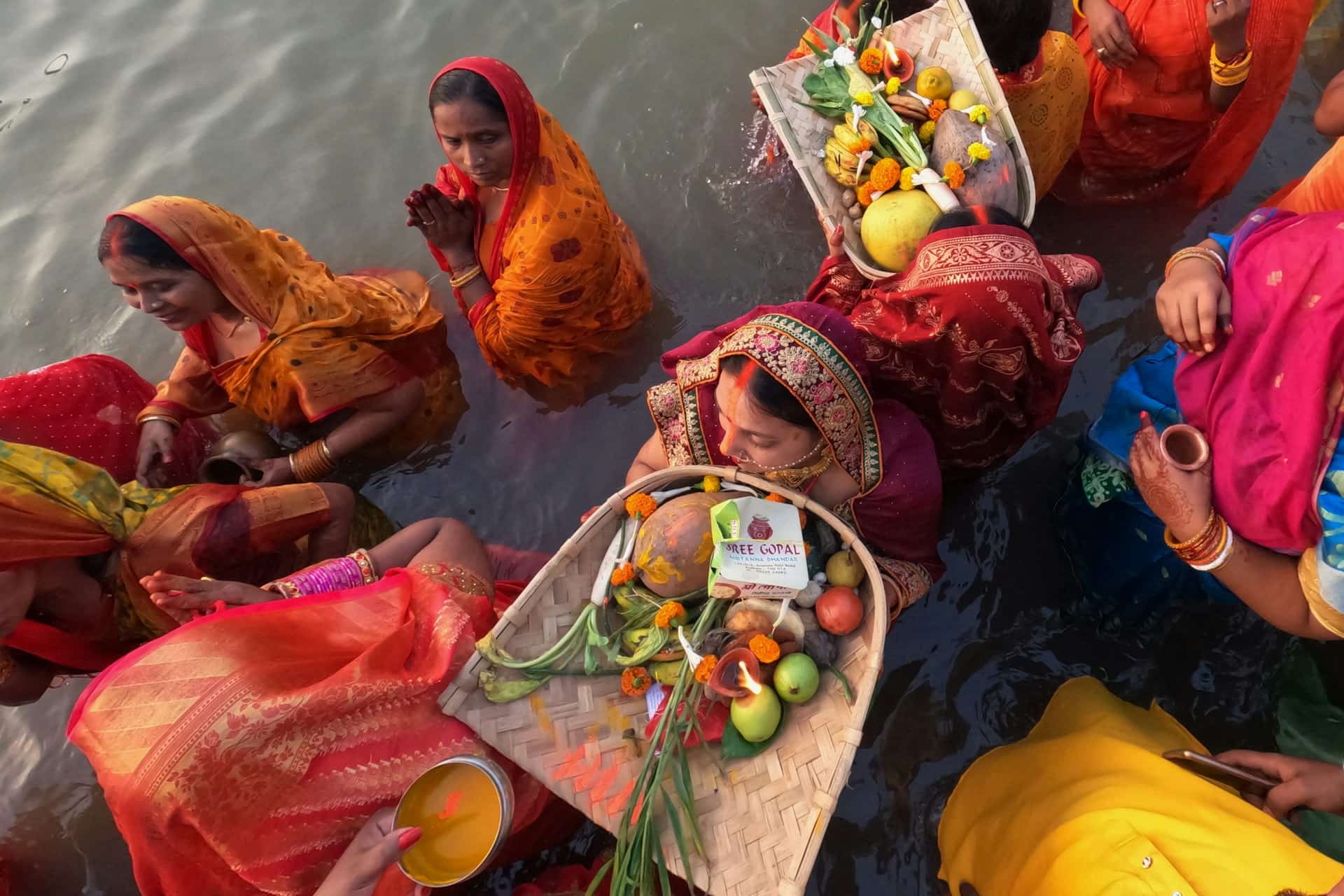
Discover the beauty of women worshipping the Sun God during the Chhath Festival, a sacred ritual of devotion and gratitude celebrated by many in Nepal and India.
Day 2: Kharna
The second day of the festival is called Kharna. On this day, the fasting begins in earnest. Devotees prepare a special sweet dish called kheer (a rice pudding) and thekua (a fried sweet made from wheat flour and jaggery). These are offered to the Sun God and then consumed by the devotees after breaking their fast. The fasting continues on this day, with devotees refraining from eating solid food during the day and instead relying on the offerings made to the Sun.
The observance of Kharna strengthens the devotion of the worshipers, and the preparation and offering of the sweets signify the importance of purity and gratitude.
Day 3: Sandhya Arghya
The third day of Chhath is Sandhya Arghya, during which devotees offer prayers to the setting Sun. Families gather at rivers, lakes, or ponds in the evening to perform the ritual of Arghya, which involves offering water and fruits to the Sun. The offerings are made in baskets, and the devotees stand in the water while performing the prayers. This is a solemn and spiritual ritual where people hope for divine blessings.
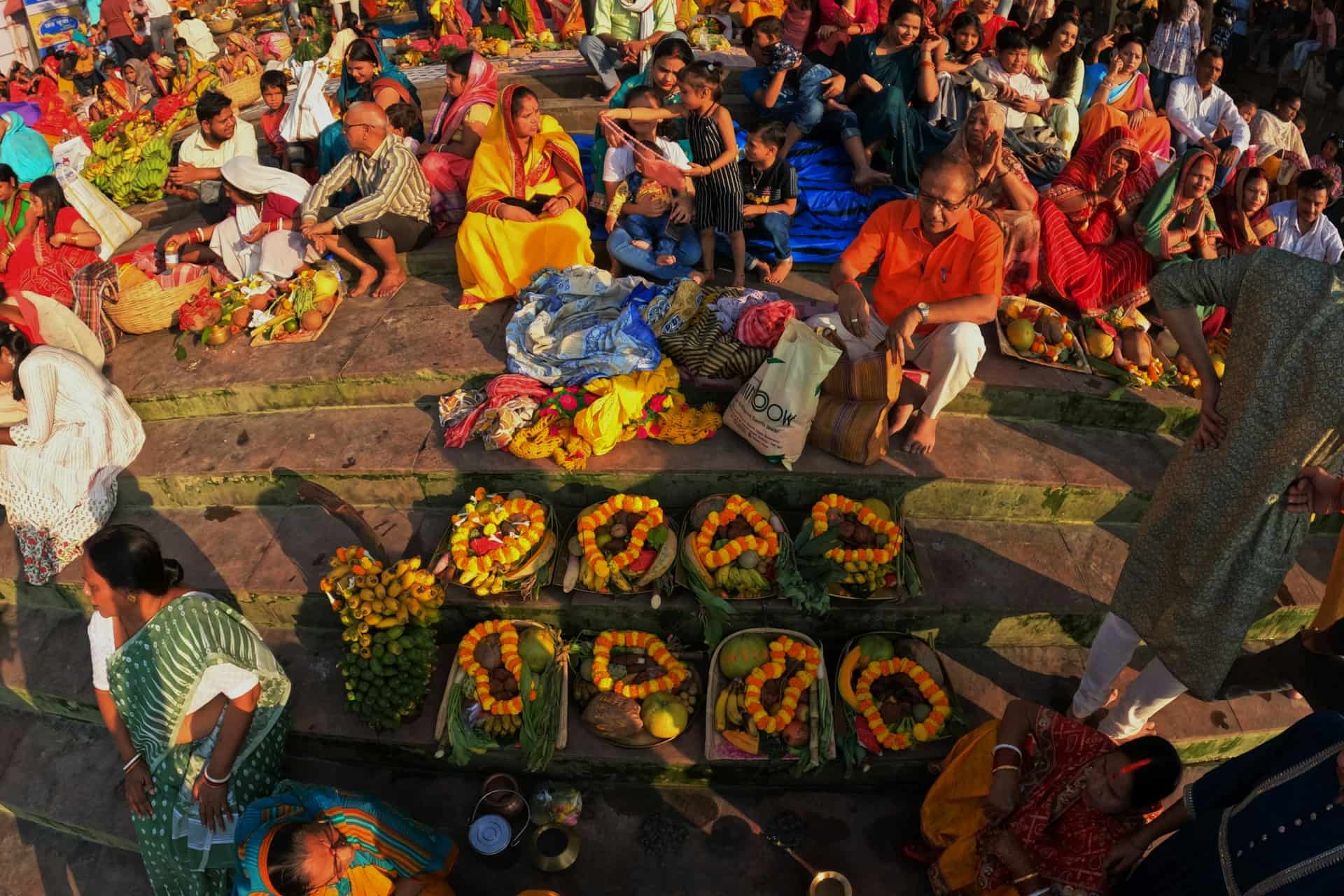
Experience the unity and devotion of people gathered together, sitting on the floor to worship during the Chhath Festival, a powerful tradition of gratitude and reverence.
Day 4: Usha Arghya
The final day of Chhath is Usha Arghya, a ritual held during the early morning hours to offer prayers to the rising Sun. Devotees stand in the water with their baskets filled with fruits and offerings, facing the sunrise as they perform their final prayers of the festival. This is the most important part of the Chhath rituals, symbolizing renewal, hope, and the promise of a new beginning.
After the prayers are completed, devotees break their fast and return home to share the prasad with their families and neighbors. The completion of the Usha Arghya marks the end of the festival, and people rejoice in the blessings they have received.
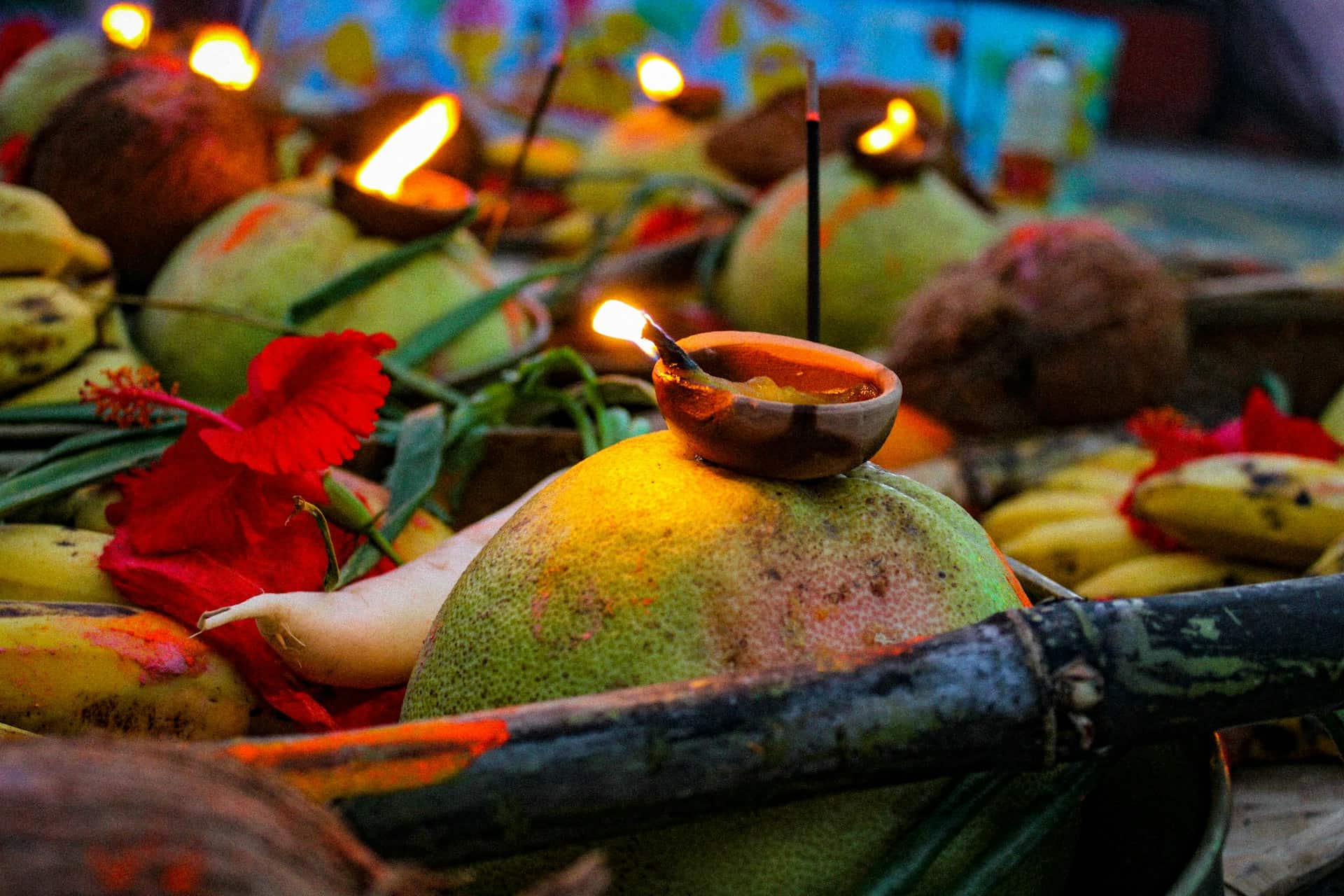
Experience the spiritual atmosphere of the Chhath Festival as diyos (lights) are carefully lit on trays, symbolizing devotion and gratitude in this sacred ritual.
Chhath Prasad: Sacred Offerings and Traditional Recipes
Food plays a significant role in Chhath. The offerings made during the festival, such as thekua, kheer, fruits, and rice cakes, are known as prasad. These foods are made with pure ingredients, symbolizing devotion and the connection between the physical and spiritual worlds. Traditional recipes involve preparing these foods without salt and with great care, as they are considered sacred.
Thekua is the most iconic offering and is made from wheat flour, jaggery, ghee, and dry fruits. It is believed that the making of thekua is not just a ritual but a way to connect with the divine energy of the Sun, as it is offered with great devotion.
Music, Folklore, and Traditions of Chhath
Music plays a central role in the celebration of Chhath. Devotional songs and hymns, known as Chhath Geet, are sung during the festival, especially during the evening and morning rituals. These songs, often passed down through generations, praise the Sun God and convey messages of gratitude and devotion. The sound of drums and traditional instruments accompanies the singing, creating a vibrant, spiritual atmosphere.
The folk traditions surrounding Chhath also include dance performances and local stories. These folklore elements highlight the cultural richness of the festival and its deep connection to the local traditions and beliefs.
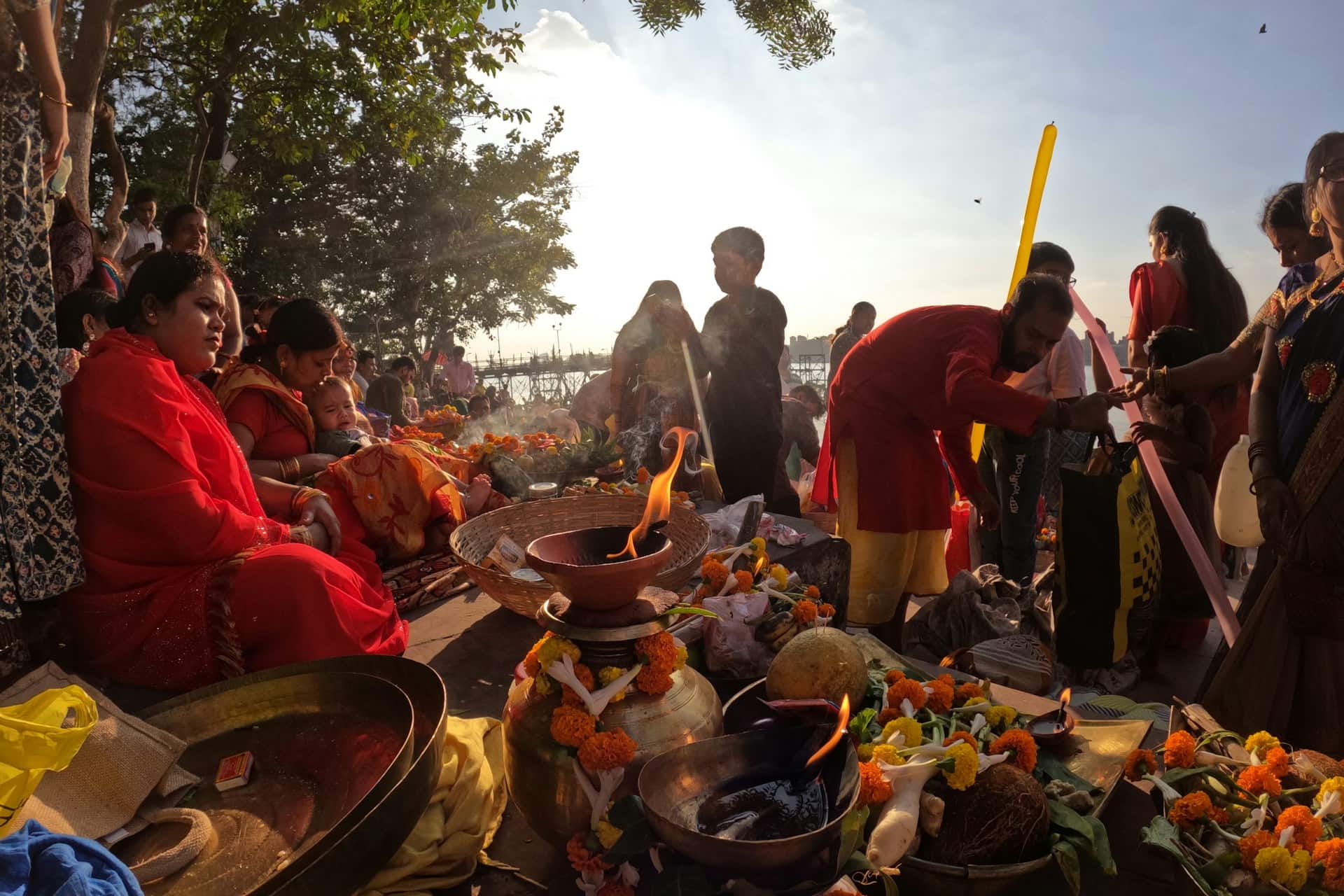
Join the peaceful scene of devotees sitting in prayer, engaging in worship during the Chhath Festival, a time of deep devotion and spiritual reflection.
Modern Adaptations of Chhath Celebrations
Chhath has adapted to modern life, and now it’s celebrated not just in villages but also in cities and abroad. People in cities, where rivers or lakes might not be available, create artificial ponds or celebrate near swimming pools and parks. Communities often come together to build temporary setups for the rituals, making it a neighborhood event.
Social media also plays a big role now. People share their Chhath celebrations with pictures and videos, allowing families and friends to stay connected no matter the distance. This has especially helped younger people celebrate and share their traditions online.
In countries with large Indian communities like the US, UK, and Canada, Chhath is celebrated in parks and public spaces. Even without rivers, people adapt by setting up temporary ponds or water arrangements, keeping the tradition alive globally.
The Timeless Relevance of the Chhath Festival
Chhath is more than just a religious festival; it’s a celebration of nature, family, and community. The focus on the Sun symbolizes life and energy, and through rituals like fasting and offering prayers, people show gratitude and seek blessings for health and happiness.
The festival brings people together, strengthening family and community bonds, whether in rural or urban settings. Even as Chhath has spread worldwide, its core values of devotion, gratitude, and respect for nature remain unchanged. For those seeking a deeper cultural immersion, a Cultural Tour in Nepal offers an opportunity to witness such vibrant celebrations in their most authentic form. Chhath continues to unite millions worldwide, connecting them to their spiritual roots and fostering joy and unity across the globe.
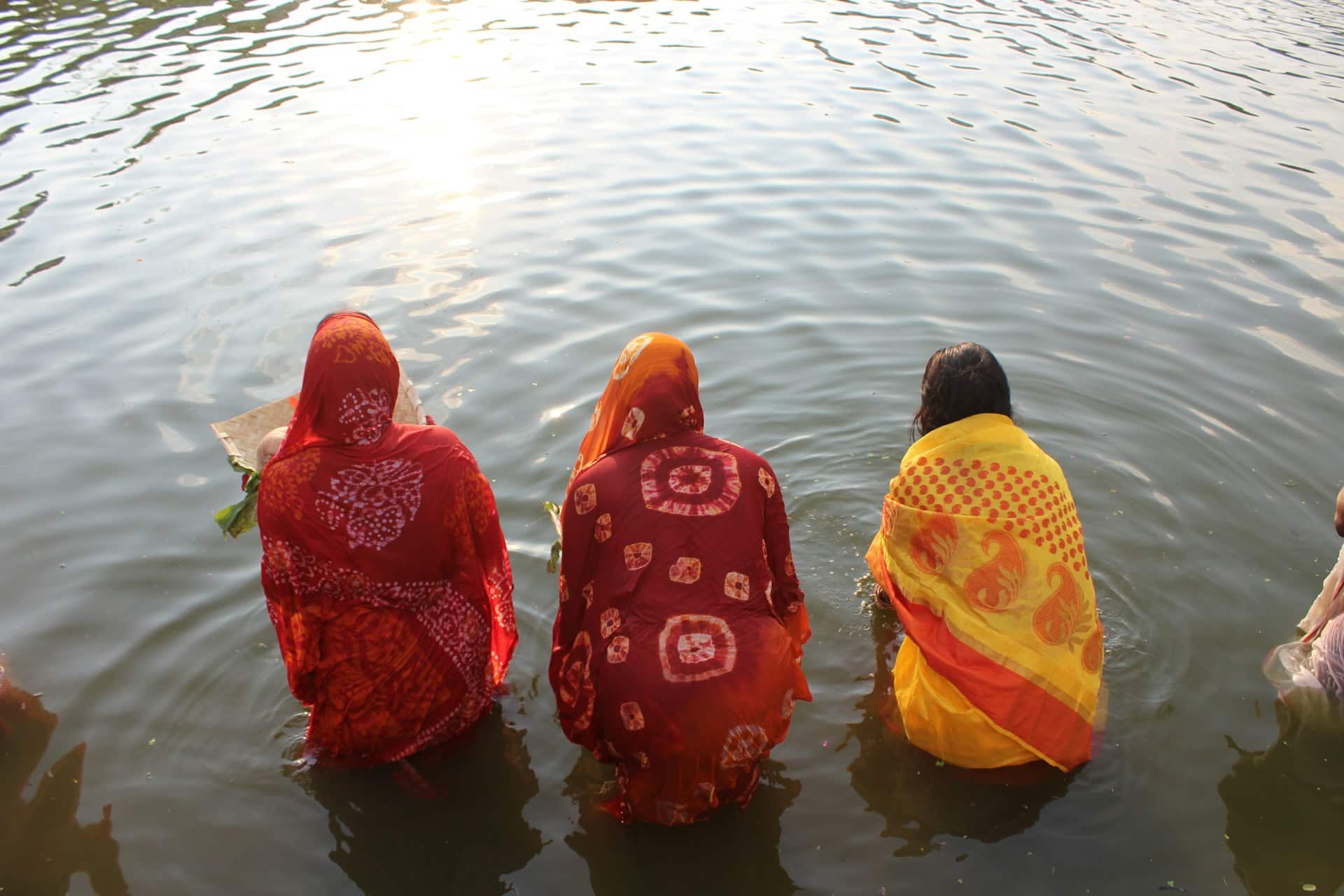
See the devotion of women as they enter the river to perform sacred worship during the Chhath Festival, offering prayers and gratitude to the Sun God.
FAQ: Chhath Festival in Nepal
1. What is the Chhath Festival?
Chhath is a Hindu festival dedicated to the worship of the Sun God (Surya) and Chhathi Maiya (the goddess of fertility). It is celebrated by people, especially in Bihar, Uttar Pradesh, Jharkhand, and Nepal, to seek blessings for prosperity, health, and happiness.
2. When is the Chhath Festival celebrated?
Chhath is observed annually, usually in the month of October or November, on the sixth day after Diwali. The exact date depends on the lunar calendar.
3. What are the main rituals of Chhath?
The four main rituals include Nahay Khay (cleaning and cooking food), Kharna (a day of fasting and offering prasad), Sandhya Arghya (evening offering to the Sun), and Usha Arghya (morning offering to the Sun).
4. What is the significance of the Sun in the Chhath Festival?
The Sun is considered the source of life and energy. Devotees worship the Sun God during Chhath to express gratitude and seek his blessings for good health, prosperity, and the well-being of their family.
5. What foods are offered during Chhath?
Special offerings called "Chhath Prasad" are made, which include foods like Thekua (a type of sweet cookie), fruits, and sweets made from wheat, rice, and jaggery.
6. Can anyone participate in Chhath?
While Chhath is traditionally observed by the people from Bihar, Uttar Pradesh, Jharkhand, and Nepal, anyone who respects the customs and is willing to observe the fasting and rituals can participate.
7. How long do people fast during Chhath?
Devotees typically fast for about 36 hours, starting from the evening of the second day (Kharna), when they eat their last meal, until the morning of the fourth day (Usha Arghya) after offering prayers to the Sun.
8. Where is Chhath celebrated?
Chhath is celebrated in rural and urban areas, near rivers, ponds, or any water body. In cities, temporary ponds and makeshift structures are set up for the rituals.
9. What are the key traditions on Day 1 of Chhath?
On Day 1 (Nahay Khay), devotees take a ritual bath in a river or pond, clean their homes, and prepare food for the next day’s fasting.
10. Is Chhath celebrated only in India?
While Chhath is most popular in India, it is also widely celebrated in Nepal and among the Indian diaspora around the world, particularly in countries like the US, UK, and Canada.
Recent Blog Posts
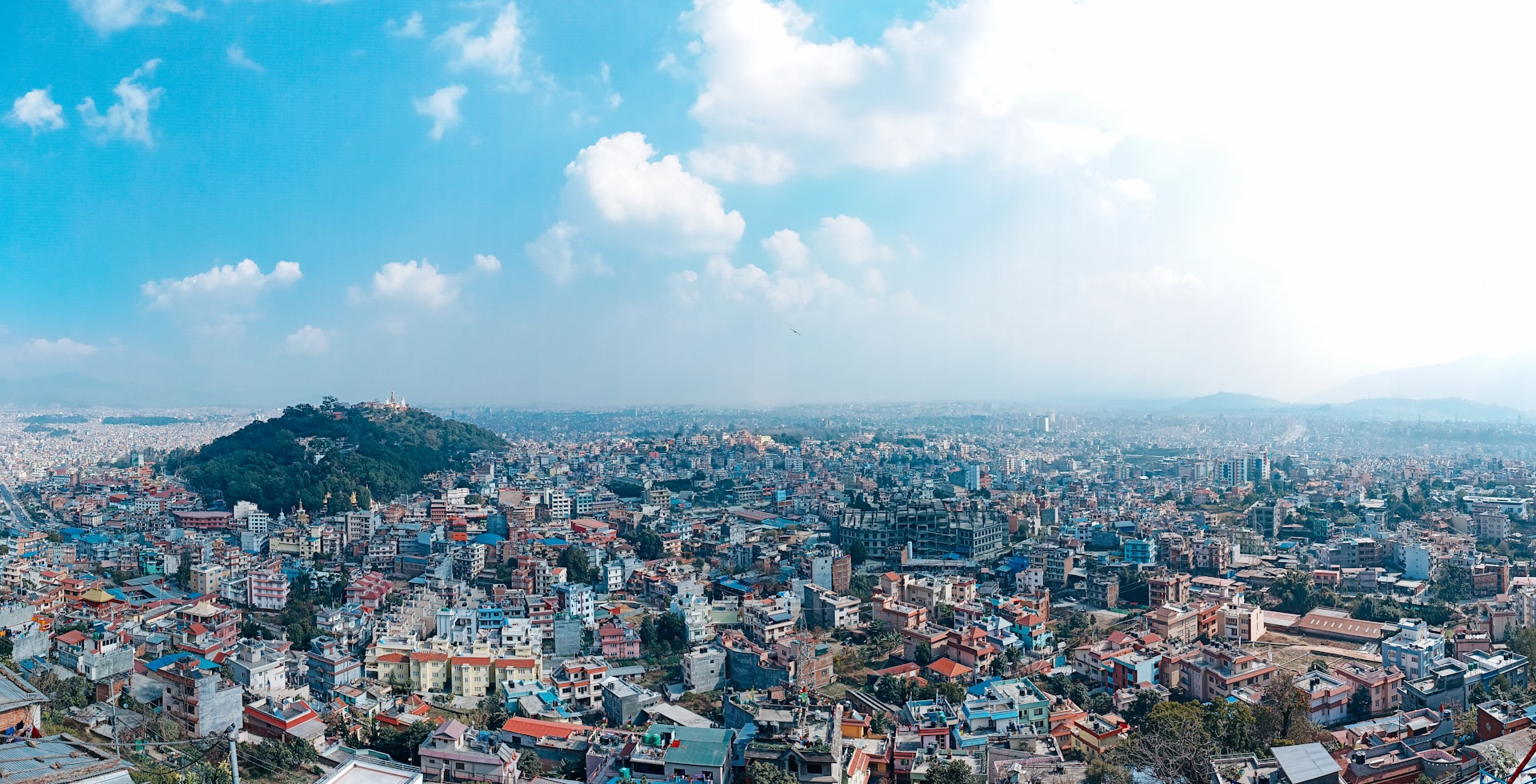
Kathmandu Valley: Exploring the Capital of Nepal
Jun 15, 2025
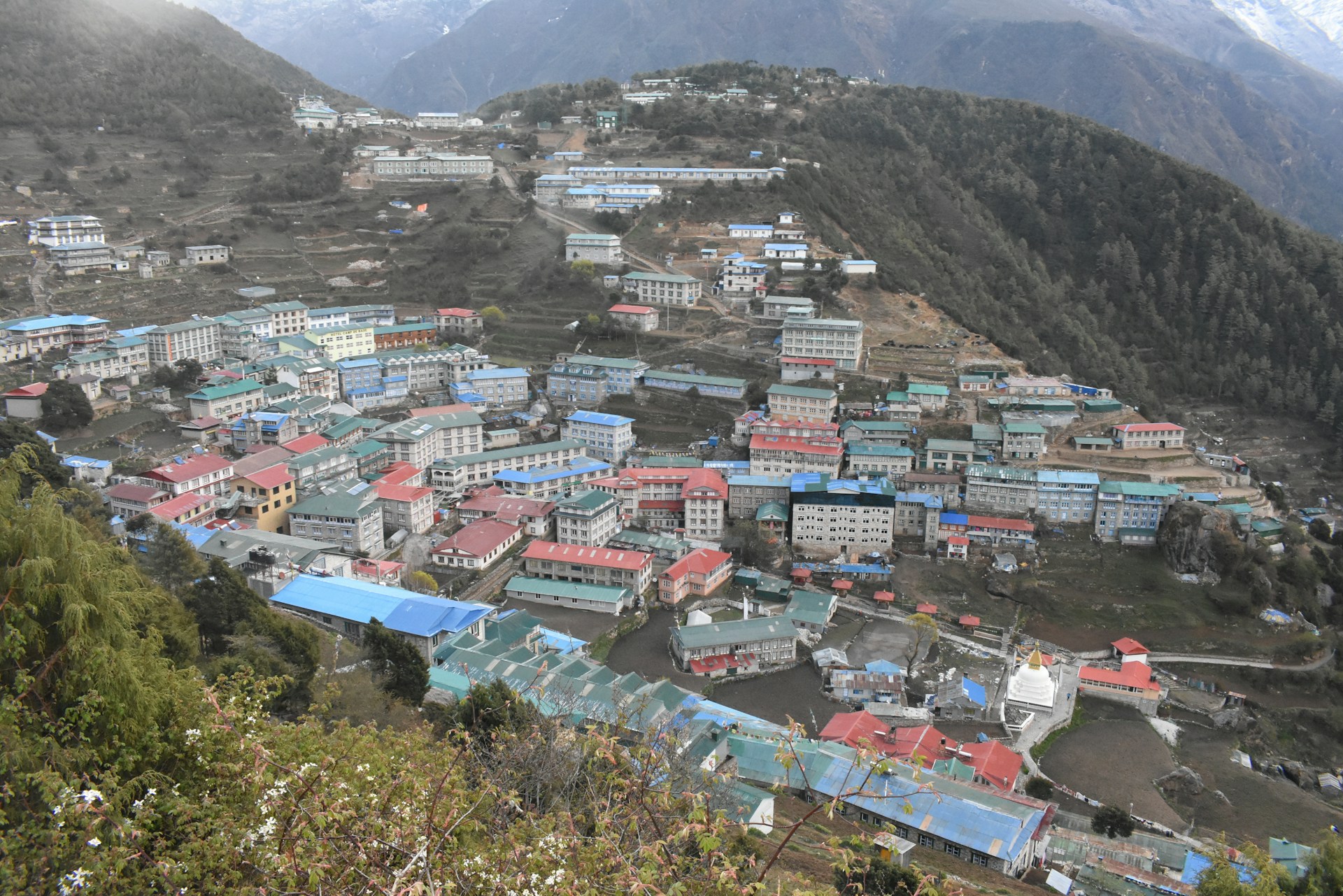
Namche Bazaar: What to Expect in the Sherpa Capital
May 20, 2025
